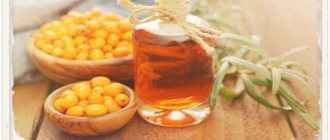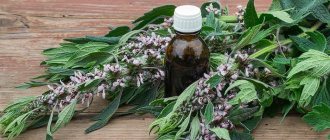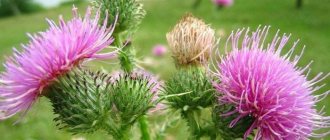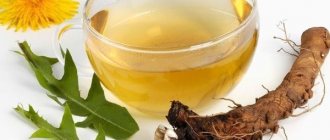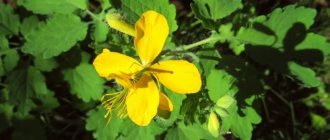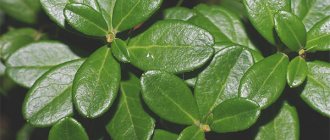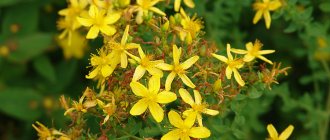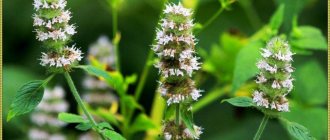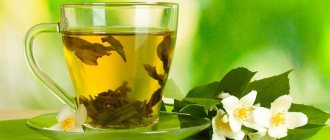At first glance, this healing herb does not seem like some kind of unusual, extremely useful plant. It’s not for nothing that they call it “grandmother’s flower”: it has been “settled” on windowsills for many decades, not competing in beauty with geraniums and violets. But the agave does not pretend to be a decoration; it is one of the most useful representatives of home flora. Aloe medicinal properties and use in folk medicine, as well as for cosmetic purposes, preparation of dosage forms, you will find all this here.
Description and chemical composition
The aloe genus is succulents and xerophytes, very popular plants among gardeners today. In their natural environment, these perennials can be leafy forms, shrubs or trees. Almost all of them have African roots, many representatives of the species are found in Madagascar.
Aloe arborescens
The most famous (at least to the average person) type of aloe is aloe vera. Only this species, as well as aloe vera, are considered medicinal. Aloe vera is also called real aloe vera. The plants are very similar, at first glance they can be confused. Aloe vera is a succulent with a short stem and thick leaves that form a dense rosette. On the gray leaves there are not very large spots, and on the edges of the leaf blade there are small spines. In nature, real aloe can bloom, but the orange flower does not want to appear on windowsills.
Aloe arborescens looks like a small shrub or tree. Under natural conditions it can grow very tall. The lower leaves (also thick, fleshy, “spiked” at the ends) of an adult plant fall off, and the bare trunk is covered by basal shoots. This makes the plant look like a tropical spreading bush. Indoor tree aloe is modest in size, and it doesn’t even come to flowering at home.
The chemical composition of agave is unique: more than 250 bioactive substances have been found in it. The agave leaf contains 97% water (juice), and it is this juice that contains those same bioactive substances.
Found in juice:
- vitamins E, C, A, group B;
- microelements - it contains a lot of iron, calcium, phosphorus, and also selenium, zinc, potassium, etc.;
- essential oils (and esters too);
- tannins and resins;
- phytoncides, flavonoids;
- beta-carotene;
- alkaloids;
- amino acids, etc.
It is generally accepted that aloe vera treats skin diseases better, and the use of aloe vera is more valuable for diseases of internal organs
Acids in aloe: cinnamic - has an analgesic and laxative effect, chrysophanic - has antifungal properties, aloic - has pronounced antibacterial properties, folic - strengthens the immune system and prevents anemia.
If we compare the content of medicinal substances of aloe vera and aloe vera, the plants are actually not inferior to each other. But it is generally accepted that aloe vera treats skin diseases better, and the use of aloe vera is more valuable for diseases of internal organs.
The unpretentious agave will tolerate even the most thorough care. But in order for aloe not only to grow, but to accumulate a lot of useful substances, it needs to provide suitable nutritious soil and regular fertilizing.
Types of aloe
There are two varieties of aloe: the tree plant and the house plant.
Treelike
It is an evergreen plant reaching a height of ten meters. Tree aloe has fleshy, large, sharp and prickly leaves of a bluish-green color, about 60 centimeters long. The root system is quite powerful and highly branched. It usually blooms in winter with the formation of a fruit in the form of a capsule containing numerous seeds. The homeland of the tree plant is South Africa. Aloe is found in Transcaucasia and Central Asia.
Homemade
Since the domestic aloe is of tropical African origin, it loves the sun very much. Grows in summer in open ground in the fresh air. It does not require regular watering, as the leaves of the plant retain moisture for several days. In winter, the agave is watered with warm water from above and directly into the pan. If there is excess water, the root system may rot. The optimal indoor air temperature in winter is considered to be ten degrees above zero. At home, agave rarely blooms, but grows quickly, reaching a height of up to one hundred centimeters per year.
Medicinal properties of aloe
Since ancient times, healers have used fleshy leaves with gel-like contents; many centuries ago it was known how beneficial aloe is for humans. For example, in Ancient Egypt, healers prepared the juice of the plant and used it as a cure for a variety of ailments - from skin ailments to respiratory diseases. In ancient China, agave was used to treat digestive pathologies. In Cuba, aloe with rum and sugar is still used as a cold remedy.
10 main beneficial properties of aloe:
- Normalizes the functioning of the stomach.
- Resists frequent constipation and has a mild laxative effect.
- Strengthens the immune system after a long illness.
- Reduces the level of toxins in the body.
- Relieves inflammation in the genitourinary organs.
- Purifies the blood and helps treat anemia.
- Dilutes sputum during bronchitis and tracheitis.
- Treats herpes and psoriasis.
- Helps prevent bedsores.
- Allows you to achieve the fastest recovery after diagnosed gynecological pathologies (ovarian cysts, erosions, obstruction of the fallopian tubes, etc.).
And these are only the basic properties of the plant, but it can show itself positively in the treatment of several dozen more pathologies. And unlike many other plants, the effectiveness of which is somewhat exaggerated, aloe therapy is supported by many doctors.
In this video, Chinese herbalist Nina Liang shares her knowledge about aloe.
Features of using aloe vera for women
Aloe is used in gynecology to treat inflammatory diseases. However, these prescriptions belong to the field of traditional medicine. For example, not all gynecologists support the idea of auxiliary treatment of cervical erosion with tampons with aloe and honey. But in modern gynecological practice, injections (subcutaneous and intramuscular) with aloe vera are widely used. This remedy acts as a general tonic, increases resistance to infectious agents, and stimulates metabolic and regenerative processes in the female body. Injections are prescribed for cervical erosion, inflammation of the appendages, obstruction of the fallopian tubes, infertility, as well as for chronic genitourinary infections (mycoplasmosis, ureaplasmosis, chlamydia).
Aloe during pregnancy is used only on the recommendation of a doctor. A strict contraindication is the internal use of the medicine, despite all the undeniable benefits of aloe. The cause is the substances anthraquinones. They provide a powerful laxative effect for constipation, but can also tighten the muscle tone of the uterus and provoke premature labor or early miscarriage. The juice stimulates a rush of blood into the pelvis, which can also cause uterine bleeding and miscarriage. Pregnant women are only allowed to use this plant externally as an antiseptic and antimicrobial agent.
What else is useful for aloe?
The juice and pulp of the leaves make the plant a powerful natural antiseptic.
Therefore, the use of the flower in the treatment of purulent wounds, burns and trophic ulcers really makes sense. It helps to stop inflammatory processes and accelerate tissue regeneration. Preparations made from aloe have a pronounced analgesic and immunostimulating effect - they naturally strengthen the body's protective properties.
Aloe also helps lower cholesterol levels by destroying plaque in blood vessels. A separate topic is the use of aloe in the beauty industry. Even at home, you can organize procedures that will not be inferior to expensive sessions. Aloe juice has a beneficial effect on the skin and hair. In short, there are a lot of reasons to place such a useful “guest” on the windowsill.
We also recommend that you read: All about Aloe with honey: what it treats and how to use it in folk medicine." Aloe (Áloë - in Latin) is a genus of succulent plants of the Asphodelaceae family - one of the most famous indoor plants, actively used in home cosmetology and herbal medicine. From this article you will learn how to properly prepare a mixture of aloe and honey, what this composition cures and how it should be used for various purposes.
Application in cosmetology
Face masks
Aloe is a medicinal plant that has been used in cosmetology for a long time. Face masks and creams are more suitable for sensitive, combination and allergy-prone skin. Cosmetics with aloe:
- enrich the skin with nutrients,
- protect from the influence of environmental factors,
- lighten pigment spots,
- help with pustular rashes, psoriasis and eczema.
The most popular cosmetics based on aloe are masks for dry and aging skin. Aloe juice is mixed with honey, glycerin, oatmeal, clean water, then beat everything with a blender, leave for ten minutes and apply a thick layer to cleansed skin. Keep the mask on your face for half an hour.
Aloe for hair
Aloe has a positive effect on the scalp, relieving dandruff, hair loss, baldness, and fragility. Aloe nourishes hair follicles, treats split ends, and makes hair thicker, stronger and shinier. For medicinal purposes, rub aloe juice into the scalp daily. After the first results appear in improving the condition and structure of the hair, the juice is used twice a week. The duration of treatment is three months. To reduce oily hair, rub aloe juice mixed with vodka two hours before washing your hair.
For those who are seriously concerned about hair problems, in particular, hair loss, we suggest that you read the article If you don’t take vitamins, Your hair may start to fall out!
Aloe for acne
Aloe juice for acne is very effective due to its cleansing, healing, antibacterial, anti-inflammatory and healing effects. It is these properties of aloe that prevent the appearance of scars, scars, and acne spots. The main way to get rid of acne is to regularly wipe your face with a small piece of aloe, on which the pulp has been cut.
A face mask for acne is prepared as follows: cut aloe leaves, grind them, add protein and pass through a blender to obtain a paste. Then add a couple of drops of lemon juice to it, apply to clean facial skin, leave for half an hour and rinse off.
Contraindications
“Everything is poison, everything is medicine” - this phrase is not just loud and metaphorical, it has a lot of meaning. And it is also true regarding folk recipes. Since all plants contain biologically active substances (and aloe contains a lot of them), the dosages of such recipes should be treated with extreme caution. And self-medication can be dangerous with unclear diagnoses, when a person decides for himself what’s wrong with him, without bothering to go to the doctor.
Aloe-based preparations are prohibited:
- women bearing a child;
- hypertensive patients and people diagnosed with serious heart disease;
- cancer patients (possible in a limited number of cases, strictly after the permission of the attending physician);
- patients with acute gastrointestinal pathologies;
- women who are breastfeeding;
- children under 3 years old.
Some mothers, despite breastfeeding, still take aloe preparations, they simply reduce the dose.
But since aloe contains a lot of bioactive substances, this can negatively affect the formation of the baby’s immune system. Allergy to aloe is rare, but it is not excluded. True, very often medicinal recipes involve the use of honey, and it is much more allergenic than aloe .
If there is the slightest doubt, any treatment with agave should be coordinated with a doctor. You should not abuse the herbal preparation, violate the recommended dosage, or combine aloe treatment with the use of other very active herbal preparations. Any combination of medications requires consultation with your doctor.
Use in traditional medicine
In addition to cosmetology, aloe-based preparations are widely used in traditional medicine. They are used in surgery, dentistry, immunology, gynecology, and dermatology. Agave juice has bacteriostatic properties against many microbes, kills staphylococci, streptococci, diphtheria, typhoid and dysentery bacilli. There are ready-made medications for the treatment of diseases of the gastrointestinal tract, eyes, and acute respiratory viral infections.
Pharmacies sell “Aloe juice” for the treatment of polyarthritis, gastritis, colitis and other diseases
Aloe with Iron syrup improves blood circulation and restores metabolic processes in the body of a sick person. His protective functions are restored, and the body itself successfully fights the infection. The syrup is used for hypochromic anemia and after intoxication.
A drug based on aloe juice “Liniment aloe” is prescribed for burns, periodontal disease, arthrosis and polyarthritis.
Extract “Aloe liquid” or “Aloe liquid for injection” is prescribed for eye diseases and gastrointestinal diseases.
How to use aloe at home
The first rule of home therapy is caution, neatness, cleanliness. All medical procedures must be carried out with clean hands, using clean plant materials. It is imperative to monitor the body's response to treatment. If the condition worsens, irritation or an allergic reaction occurs, treatment should be stopped.
Increasing immunity, recovery from illnesses
Aloe juice is often called “immunity drops.” It is added directly to freshly brewed tea or mixed with linden honey. And these drinks perform an important function - they vitaminize the body and at the same time protect it from bacterial attack. During the so-called cold season, aloe juice will be a good support for the body.
Aloe juice is considered an excellent restorative composition. It vitaminizes the body that has suffered a (possibly long-term) illness. The medicinal properties of the juice help tissues and organs recover and return to optimal “working mode.” To obtain juice, you need to squeeze the liquid mass contained in the aloe leaf through gauze.
For eye diseases
The antibacterial, anti-inflammatory and healing properties of aloe make it a useful natural remedy in the treatment of eye diseases. For example, aloe extract is considered a valuable therapeutic and prophylactic composition that prevents conjunctivitis, farsightedness and myopia, etc. These eye drops contain silver, honey and, directly, aloe.
Extract composition:
- water with silver ions – antiseptic, anti-inflammatory;
- honey demonstrates antibacterial and antifungal properties, provides the eyeball with nutrients, and restores the injured structure of the eyeball;
- adenosine, B vitamins, vitamin C contained in agave strengthen the walls of blood vessels, improve tissue nutrition, and reduce the risk of hemorrhages.
Aloe extract according to S. Fedorov is a product that can be found in a pharmacy. The medicine is accompanied by a list of indications, contraindications and features of use. Typically, drops should be used for 4-6 weeks. Dosage involves using 1-2 drops 2-3 times a day.
For the disease, which is popularly called “barley,” aqueous tincture of aloe is often used. The fleshy leaf, crushed into pulp, is diluted with slightly cool water, left overnight, and filtered. Use until persistent signs of recovery.
You will learn more about drops with aloe extract from this video.
Runny nose, rhinitis, sinusitis, sinusitis, including in children
Aloe nasal drops, as soon as they enter the nasal passage, penetrate the blood vessels. Through them, the useful composition is instantly distributed throughout the body, preventing viruses from multiplying. A natural antibiotic leads to the death of toxins. Adults can take aloe juice undiluted, straight from the leaf. But still, extra precautions will not hurt: it is better to dilute the natural juice with water in proportions of 1 to 2. 3 drops should be dripped into each nostril, 3 times a day.
As soon as the juice gets on the mucous membrane, the person begins to actively sneeze. This clears the sinuses and makes breathing easier. You can use this recipe for both rhinitis and sinusitis.
Children are given agave juice mixed with honey, 1 teaspoon before meals. Sometimes aloe is prescribed even to infants - the solution is diluted with boiled water in a ratio of 1 to 5, but consultation with a pediatrician before such treatment is required!
For diseases of the mouth and gums
Recipes for making medicine from aloe pulp are also of interest to those who want to cure periodontal disease. This disease is characterized by dystrophic changes in periodontal tissues. The disease causes the tissue around the tooth to become thinner.
The easiest way to use aloe in this situation is to chew the fresh leaves.
It’s not very difficult to do this, it’s just unusual. The therapeutic effect can be achieved by periodically chewing clean leaves for 3-4 weeks. For gingivitis, aloe can also be useful, but only if the inflammation has not become chronic. Morning and evening, every day, apply the cut leaf to your gums. Leave for a few minutes .
Throat diseases
Treatment with agave juice is most effective - to obtain juice from the leaves, you need to cut off the thorns, cut the pulp into small pieces, squeeze through gauze, and strain. Excellent compositions for curing throat diseases are obtained if the recipe contains several supersubstances from the home medicine cabinet.
100 g of agave juice should be mixed with the same amount of lemon juice, mixed with 300 g of linden honey, and add a little chopped walnut. Drink this 1 tsp. three times a day before meals.
Hypertension, to lower cholesterol
Recipes with the medicinal properties of aloe will also help cleanse blood vessels of cholesterol plaques. Cut the stems from the bottom of the plant, rinse thoroughly and cut lengthwise, collect the pulp in a container, transfer to a blender, add a glass of water. This juice should be used for 3-4 days. More than 100 ml of juice per day cannot be used.
People with diagnosed hypertension, which has already crossed the initial stage, should not drink aloe. Those whose blood pressure rises slightly and rarely can consult a doctor and drink agave.
A popular recipe is as follows: 1 large spoon of fresh mint, the same amount of diluted aloe, 2 spoons of St. John's wort, 1 potato, 0.5 liters of water. All ingredients are poured with boiling water, covered, and infused for 2 hours in a dark place. The composition is filtered. Fresh potatoes need to be minced and the juice squeezed out. Add this juice to the herbal tincture and mix. Drink the composition an hour before meals, 2 spoons 4-5 times a day.
For tuberculosis
For this disease, agave is taken in the form of tinctures and ointments. If you take a few medium aloe leaves, 120 ml of water and 150 g of honey, you can get an excellent recipe for treating tuberculosis. Finely chop the leaves into a saucepan, add the rest of the ingredients there, stir and simmer for 2 hours over low heat. This mixture should be taken before meals, 1 tbsp. l.
Oncological diseases
Agave stimulates the immune system and exhibits antioxidant properties that protect the body from tumor growth.
It is believed that plant-based recipes can reduce the size of the tumor. But such calculations should under no circumstances be reasons for self-medication. A dangerous consequence of unwise treatment can be excessive cell growth. Only aloe vera is used in this area, and only after consultation with the attending physician. Agave juice may be effective in chemotherapy. Only the attending physician can tell you specific dosages and treatment options - all cases are unique and require an individual approach .
Gastrointestinal diseases, gastritis, stomach ulcers
Some patients drink aloe juice mixed with honey for gastritis 15 minutes before meals in the amount of 2 small spoons. The course of treatment should not exceed 3 weeks; a second course can be taken no earlier than 2 weeks after the first course.
The combination of aloe and honey helps with many ailments, including gastrointestinal problems
In the recipe for treating ulcers, in addition to squeezed agave juice and honey, chopped walnuts are also used (3: 5: 1). The medicinal composition should be stored in a cool, dark place. They drink the medicine for 2 months, 1 spoon half an hour before meals.
For diabetes
Peeled, crushed agave leaves are poured with a small amount of water and boiled in a water bath for 15 minutes. The mixture is constantly stirred during the cooking process. The mixture must be cooled and filtered. You need to drink the decoction 2-3 times a day, 1 tablespoon.
And some patients even eat a small (2 cm) piece of a clean leaf raw. All beneficial components of the plant enter the body directly. You need to eat a few minutes before your main meal.
For chronic constipation
Grind 150 g of agave pulp, pour in 300 g of boiled water, slightly cooled. The mixture is infused for a day, after which it can be taken 1 tsp. a day before meals three times a day. This medicine should not be taken for more than one day. If the stool is not restored, you need to consult a specialist.
You can mix agave juice with fruit juice and add this mixture to herbal tinctures for constipation (thereby enhancing their effect). You should not add more than 2 tablespoons per 1 glass of water. In its pure form, the juice is used only if there are no contraindications and if it is well tolerated.
Aloe for hemorrhoids
At the first stage, such treatment can be effective.
The medicine quickly relieves swelling and pain, stops bleeding, strengthens vascular walls, and increases local immunity. Local treatment will be more effective. Sitz baths, lotions, and compresses help relieve pain, swelling, and inflammation.
A bandage folded in several layers is moistened with a healing composition (for example, freshly squeezed juice). It is applied to the perineal area, the compress is fixed on top with cellophane and adhesive tape. Keep the composition on the skin for 40-60 minutes.
Healthy recipes with aloe juice
Consider healing recipes with aloe juice:
- For the stomach and blood purification
Mix the juice or pulp of adult aloe leaves (3-5 pieces) with lemon juice 3:1 and take a tablespoon before meals three times a day.
- Against cough
Honey, lingonberries and aloe, 25 grams of each component, mix together and take 2 tablespoons 4 times a day.
- Heart attack and heart disease
For half a glass of water 3 tbsp. spoons of dried fruits and 2 tbsp. spoons of pure aloe juice. You can add strawberry leaves and hawthorn berries.
- Warts
Apply fresh aloe pulp with ointment as a compress on the wart. After some time, it will disappear from the skin on its own.
- Headache
For headaches, it is recommended to simply rub aloe juice into your temples.
- Aloe vera gel ointment, recipe here
- Aloe with honey
Recommended dosage
Remember that you cannot consume more than 100 ml of aloe juice per day!!!
Video about drinks and cocktails with aloe juice
Be sure to watch this interesting video about what cocktails and drinks you can make with aloe juice.
Aloe for cosmetic purposes
Agave is also used to prolong youth and beauty. It is easy to use and the effect is impressive.
Aloe for hair
A three-component mask is considered especially effective. 1 tablespoon of agave juice, 1 tablespoon of melted flower honey, 1 egg yolk or a whole egg (depending on whether your hair is dry or normal). If the hair is very long, the amount of ingredients should be doubled.
You can achieve shine and silkiness in your curls using aloe-based masks.
Mix honey and egg, add aloe juice. Distribute this mixture over the entire length of your hair. Insulate your head - first with polyethylene, then with a towel. After half an hour, remove the insulation and wash your hair with regular shampoo. To improve hair growth, as well as its silkiness and strength, you need to do 10 such procedures.
For face
The juice of the plant is able to nourish and saturate the deep layers of the skin with beneficial elements, it helps the skin produce more collagen. The plant pulp also relieves skin irritations.
How to use aloe for face:
- You can wipe cleansed facial skin with fresh pulp;
- You can include gel from agave leaves in other anti-aging masks;
- You can apply gauze soaked in the juice of the plant to your eyelids.
The recipe will not remove age-related and deep expression wrinkles, but it will slow down the aging of the skin and will perfectly cope with the first wrinkles.
Skin damage
For medical purposes, an adult plant that is already 3 years old is taken. The affected area of skin must first be treated with a regular antiseptic. After this, the ointment is applied to the wound and covered with a sterile napkin. Be sure to secure the napkin.
Alcohol tincture of aloe helps cope with acne and boils. Twice a day, damaged areas of the dermis should be cleaned and sterile wipes soaked in tincture should be applied to them.
For skin defects
If the skin has undesirable pronounced pigmentation, if it is often subject to irritation or rashes, a tonic with agave juice may be a useful remedy. To make homemade tonic, you need to take the lower leaves, about 15 cm long. The leaves should be cut into small pieces, pour boiled water (1:3), and cool the water beforehand.
Place the mixed mixture in a dark place, cover with a lid, and after 2 hours strain through cheesecloth. The finished tonic should be stored in the refrigerator for no longer than 2 weeks. The tonic is applied to a cotton pad, which is used to treat the skin of the face (especially problem areas). An excellent and simple product for your morning cleansing ritual, as well as for soothing the skin after removing makeup.
Dosage forms of aloe vera in pharmacology
Aloe is produced as independent preparations in liquid and dry extract, and as part of many other medicines.
- Liquid extract. This drug is a biogenic stimulant and is intended for subcutaneous injection. Used in gastroenterology, neurology, pulmonology. Injections are prescribed for gastritis, colitis, cholecystitis. They provide a therapeutic effect for neuralgia, neuritis, pneumonia, bronchitis, tuberculosis, and after a stroke. Injections are recommended in the complex treatment of male infertility, various ophthalmological diseases - conjunctivitis, blepharitis, keratitis and other inflammations. The drug is effective in reducing visual acuity, hearing and smell. Read more about aloe injections in our other article.
- Juice. Used internally, externally, locally. The juice preservative is alcohol. Belongs to the group of laxatives, tonics, immunomodulatory, bactericidal drugs. The juice enhances the effect of other laxatives, as well as drugs that stimulate hematopoiesis. There may be a risk of potassium deficiency if aloe juice is used concomitantly with diuretics (diuretics).
- Aloe liniment. It is a creamy mass. It is used externally for burns (including radiation), dermatitis, neurodermatitis, psoriasis, eczema, lichen ruber, atrophic lesions of the mucous membrane and skin of the vulva. Apply a thin layer to the affected areas several times a day, covering with gauze. For severe lesions, apply a thick layer without a bandage.
- Syrup with iron. This combined herbal preparation is prescribed for hypochromic anemia; it replenishes iron deficiency and increases hemoglobin levels. The drug can also be used as an antiseptic, laxative, choleretic, adaptogenic and tonic. The syrup has a fairly extensive list of contraindications: chronic renal failure, heart failure, cholelithiasis, cystitis, high blood pressure, hemorrhoids, uterine bleeding, and other types of anemia.
- Pills. Prescribed for progressive myopia, to accelerate tissue regeneration. Drink for a long time - at least a month. If prescribed by a doctor, you can take a second course after 3–6 months. There are film-coated tablets, 20 pieces per package. Another drug is also offered on the pharmacological market - aloe in the form of a dietary supplement (240 pieces in a jar). This drug contains cellulose, lactose, vitamin C, B vitamins, calcium, nicotinamide (vitamin PP).
You can also purchase skin care cosmetics with aloe extract in pharmacies and specialized stores - hand and face creams, lotions, peeling masks, gels, deodorants.
Aloe in folk medicine is a proven and effective remedy. For many decades, recipes for preparing tinctures, ointments, and decoctions from the juice of this flower have been collected. They are used in the complex treatment of constipation, gastritis, pancreatitis, sore throat, laryngitis, sinusitis, bronchitis, pneumonia, anemia and many other diseases. No less valuable is the external use of agave.
Source
Medicine recipes
2 weeks before cutting the leaf you need to stop watering it. This way you will increase the concentration of healing components in the leaves. It is better to move the plant to another location 3 days before cutting. Cut off the leaves themselves with a sharp knife at the base of the trunk. The extracted raw materials should be wrapped in thick paper (foil is also suitable) and kept in the refrigerator for 2 days to 2 weeks.
Aloe juice
Only the lower fleshy leaves of the agave are ready for cutting. Remove dry and damaged leaves, old ones, in a timely manner.
How to make Aloe juice
How to make aloe juice:
- Chop the raw material kept in the refrigerator very finely with a knife or grind it in a blender.
- Pour the resulting mass with boiled water (1 part plant to 3 parts water), mix the composition thoroughly.
- Squeeze the mixture through a gauze cloth and pour the mixture into a clean glass container.
There is no need to dilute the juice before use. If you intend to store the juice for a long time, it must be mixed with high-quality alcohol to obtain a tincture. In its pure form, juice should not be stored in the refrigerator for longer than 10-14 days. Try to use it no longer than a week, preferably 3-4 days.
This video is also devoted to preparing aloe juice.
Aloe tincture
Cut off the leaves, 2 weeks before preparing the infusion, place them in foil and put them in the refrigerator. During this time, the raw materials are fermented. Grind the leaves and filter through cheesecloth in the usual way. Place the raw materials in a glass jar, fill with vodka 2:1, and close with a lid.
The taste of agave is slightly bitter, so you can add a little sugar to the composition. The mixture should infuse for a week and a half in the refrigerator. After this, it must be carefully strained. The tincture will be useful only if it is stored in a dark and cool place, but in the light there will soon be no trace of its beneficial qualities.
Aloe ointment
An excellent ointment that helps care for the skin of your hands and heal cracks, it is made from water, yolk, vegetable oil, honey and aloe.
How to prepare the ointment:
Honey needs to be melted in heated filtered water, add 1 egg yolk and 1 spoon of vegetable oil. 1 tablespoon of aloe juice is also added there. All ingredients are thoroughly mixed and cooled.
How to use:
First, add salt to the heated water and dissolve it. You need to keep your hands in this salt water for 8-10 minutes. After this, you need to gently wipe them and absorb the resulting ointment into the skin. Wash off any remaining ointment no earlier than after 15 minutes.
There is no need to prepare the ointment for future use - just make a small jar that will be used in the coming days.
Aloe oil
Aloe oil is obtained by maceration, in other words, infusion of the extract in the main substance. So aloe can be added to coconut oil, sea buckthorn or olive oil. Even sunflower oil can be used. The resulting product boasts the following properties: antibacterial, sunscreen, antioxidant, antiviral.
How to make butter at home:
- Collect agave leaves and wash. Divide each sheet in half.
- Dry the aloe. And if you have a fruit dryer, chop up the leaves and put them in it. You can replace the dryer with an oven. At a temperature of 30 degrees, the raw material will dry for about 5 hours.
- Take a glass container with a lid. Fill it with raw materials dried until brittle. Then send any base oil there. It should completely cover the agave.
- Infuse the healing mixture for several weeks in a warm place. Once ready, the oil needs to be strained and poured into convenient storage bottles.
The oil is mainly used for skin care: it is added to creams and lotions to enrich their composition. It is used as a tanning product. It heals wounds and fights fine wrinkles. Oil is also added to hair masks. .
What does it cure?
Aloe vera products can be used to treat various diseases. Health benefits and harms depend on the individual characteristics of the patient.
Cough
The healing properties of aloe, such as antibacterial, anti-inflammatory, and immunomodulatory effects, make it possible to recommend plant juice for coughs. It is drunk in its pure form, with honey or lemon added to it. Can a banana treat a cough?
Most often, a mixture of aloe juice and honey is used to treat cough.
Runny nose
Homemade aloe recipes always describe the process of preparing nasal drops. Large leaves from the bottom of the plant are cut, the pulp is squeezed out, and the resulting liquid is slightly diluted with water. Medicinal properties allow you to quickly get rid of a runny nose in some pathologies. In case of acute sinusitis or frontal sinusitis, the medicine can be harmful.
Haemorrhoids
The plant taken orally will provide benefits for this delicate problem. You can often find such an unsafe method of use as inserting the pulp of a leaf into the anus.
You should know that the use of aloe is prohibited in case of bleeding, and in case of hemorrhoids, such a symptom may not be visually noticeable.
Stomach
The bitter plant is used as a laxative. Due to its slimy structure, the succulent is recommended for constipation. Anti-inflammatory activity will be beneficial in a number of gastrointestinal pathologies.
Reviews about the application
If you know what medicinal aloe looks like, you can try using it for your own health. And then your experience will confirm (or refute) the experience of those who have already been convinced of the healing qualities of the plant.
Julia: After giving birth, like many others, my hair fell out. Little helped. Then on one forum I read that aloe pulp works wonders. And this is true - after a month of use, under my thin bangs, I grew... another one, such a thick layer. As a result, after a year of regular treatment, I grew a real mane. It was like this only in childhood.
Ilona: Since childhood, our mother taught us to put aloe juice in our noses, and now I do the same for my children (I just dilute it with water). A natural, simple remedy, but very powerful. I call them “vitamins in the nose.” The doctor also told me that homemade rectal suppositories in the form of frozen aloe juice can cope with hemorrhoids in the early stages.
Victoria: In my youth, every summer, every August, I had a misfortune - stye on my eye. I didn’t take off my dark glasses for two weeks. Back then, everyone was treated with home remedies and didn’t go to the pharmacy. Someone advised me to use aloe juice. Without much hope, I started dripping diluted juice onto my swollen eyelid. And, I must say, the problem began to disappear. Interestingly, since then there has been nothing like this for more than 20 years. And I love aloe to this day - I buy shampoos, creams, and pharmaceutical compositions with it.
Homemade aloe vera flower: benefits and harm
Succulent plants accumulate and retain moisture in their fleshy leaf plates. This explains their unpretentiousness and ability to withstand periods of drought.
For traditional medicine, the homemade aloe Vera flower, the benefits and harms of which are well known, is a unique source for the preparation of medicines.
Juicy leaves are used as raw materials, which contain the following elements:
- phenolic compounds;
- slime;
- organic acids - citric, malic, succinic;
- polysaccharides;
- bitterness;
- prostaglandins;
- resins;
- glycoproteins;
- hormone-like compounds;
- flavonoids;
- enzymes;
- essential oil;
- B vitamins;
- ascorbic acid;
- carotenes;
- potassium, magnesium, calcium, copper, zinc;
- choline;
- folic acid.
The rich structural formula of the plant determines its beneficial characteristics:
- stimulating the regeneration of collagen, which serves as the basis of connective tissue;
- antioxidant effect that helps eliminate dangerous free radicals;
- strengthening the immune system;
- normalization of metabolic processes;
- slowing down cell aging;
- providing antifungal, antibacterial, anti-inflammatory, antiseptic effects;
- stimulating blood circulation.
The antiviral effect is provided due to the presence of acemannan in the composition. This element helps activate a defense mechanism designed to destroy foreign harmful cells, including malignant tumors.
Aloe vera contains ulcin, which helps prevent the development of ulcerative pathology. The laxative effect is due to the presence of the element aloin.
This plant has anti-stress, analgesic, and anti-allergic effects.
Quickly heals skin lesions - wounds, burns.
Medicinal compositions based on aloe vera are used for the following diseases:
- arthritis;
- gastritis;
- stomach ulcer;
- pulmonary pathologies;
- cold;
- sinusitis;
- throat diseases.
Contraindications:
- pregnancy;
- individual intolerance;
- period of feeding the baby with breast milk;
- chronic heart pathologies;
- cystitis;
- complicated renal and liver diseases;
- haemorrhoids;
- exhaustion of the body.
To avoid unwanted side effects, you must follow the dosages recommended in recipes for preparing and taking a variety of aloe vera-based products.
Folk recipes
Remedies made at home from aloe are used for various diseases. They usually become an addition to drug therapy, allowing you to speed up recovery.
Options for popular recipes:
1. Tuberculosis. Combine the juice obtained from aloe leaves and mantle with the addition of honey, softened butter and cocoa powder.
The ingredients are taken in equal volume fractions and mixed thoroughly. Consume before breakfast and dinner - 1 tsp 30 minutes before.
2. Indigestion. Pour aloe juice - 300 ml, honey - 500 ml, liquefied with slight heating, and red wine - 700 ml into a sterile glass container.
They are kept in the dark for five days. After filtration, consume 1 tbsp three times a day. l. before eating.
3. Constipation. Wash and finely chop the leaves of the plant. Measure out 150 g, mix with liquid honey - 300 g, leave for a day.
Then lightly heat it in a water bath and filter. It is recommended to take 1 tsp in the morning on an empty stomach before breakfast.
4. Laryngitis, bronchial asthma, peptic ulcer. Combine half a tablespoon of honey and aloe juice. Dissolve the mixture in boiled milk cooled to a warm state.
Consume this portion daily 30 minutes before breakfast, lunch and dinner. After 3 weeks, take a break for 14 days and repeat the course if necessary.
5. Heart attack. Washed dried fruits - 3 tbsp. l. - Place in an enamel bowl. Pour in half a glass of boiling water.
Cover with a terry towel. After an hour, drain the infusion and add aloe juice to it - 2 tbsp. l.
Drink the healing liquid in small sips throughout the day.
6. Heartburn. Grind calamus root. Measure out 1 tbsp. l. and place in an enamel cup. Add boiling water - 300 ml, cover with a towel. After 20 minutes, heat the composition for 10 minutes using a water bath.
To the cooled and filtered broth add squeezed aloe juice - 0.5 tbsp. l. Consume before breakfast and dinner - 1 tbsp half an hour before. l. The course lasts 2 weeks.
Recipes for beauty and health
- Aloe is actively used in folk medicine for external use on calluses and wounds. To do this, the leaf of this plant is cut and the pulp is applied to the damaged skin, and a clean bandage is applied on top. Treatment dressings should be changed every 4 hours.
- For stomatitis, it is recommended to chew the agave leaf for several minutes, after which the cake is spat out.
- To enhance the body's defense mechanisms, it is recommended to consume 1 teaspoon half an hour before meals. spoon three times a day the following mixture: 4 table. spoons of agave juice, ½ cup each of honey and lemon juice, a glass of walnuts.
- Taking aloe juice for the eyes helps strengthen vision. To do this, it is recommended to use it in a 10-day course, 1 teaspoon three times a day. spoon.
- Lubricating the sores with agave juice up to 5 times a day will help get rid of herpes.
- Lotions made from agave juice diluted with water (10 parts water to 1 part juice) will help with burns, purulent and trophic wounds.
- For a sore throat, it is recommended to gargle with equal parts of agave juice and water.
- An effective method for getting rid of a runny nose is to instill fresh agave juice into your nose, 4 times a day, 2 drops in each nostril.
- Applying a fresh compress of crushed agave leaves will help get rid of warts.
- Rubbing the juice of this plant into your temples will relieve headaches and attacks of dizziness.
Cosmetologists use agave juice as masks for the face and hair.
A therapeutic mask of kefir, castor oil and aloe juice, applied half an hour before washing your hair, will restore shine to dull hair and strengthen the hair follicles.
Rubbing agave juice daily for 2-3 months will get rid of dandruff, and in combination with vodka (1:1) will solve the problem of oily hair.
Rubbing the skin of the face daily with fresh agave juice will get rid of comedones and blackheads, relieve skin inflammation, tighten pores, and improve skin color.
A mask made from equal parts of honey and agave juice will moisturize and refresh aging skin and smooth out wrinkles.
A paste made from blue clay and aloe juice has proven effective in caring for oily skin types. Applied to the face for 15 minutes, it will cleanse the skin, relieve inflammation, get rid of acne, and reduce the secretion of sebum.
In traditional medicine, when treating diseases of the eyes, stomach, and asthma, intramuscular or subcutaneous injections are often prescribed; the medicinal properties of agave juice are more effective when used in this way. This method of treatment is used only as prescribed by a specialist.
Aloe is a universal remedy that can help treat a large number of diseases. Being a powerful biostimulant, it activates the reserves of the immune system, giving health and longevity.
Aloe (juice), instructions for use. Analogs and options
The pharmacy sells the product not only in the form of a canned solution with alcohol. The extract for injection contained in ampoules is very popular. It is used for inflammation of the respiratory system, female organs, gastrointestinal tract, and vision problems. Injections are also given to strengthen the immune system, as the instructions state.
To prevent skin diseases, liniment or gel is used externally. It helps well with burns, lesions due to radiation therapy, inflammation of the skin and mucous membranes.
In some cases, the optimal form of the drug for the patient is tablets, which are taken for a month. For example, they are prescribed for myopathic chorioretinitis and myopia.
As such, there is no analogue to the drug. But there are variants of the product (“Aloe Tree Syrup”, “Extract”, “Gamma Vitamins”, “Aloe Vera” and others), where aloe juice is offered in combination with other beneficial substances. The instructions for using the drug with added iron state that in some cases it can be even more useful. So, it is used:
- with anemia;
- iron deficiency;
- blood loss;
- radiation sickness;
- intoxication.
Aloe juice will also actively help during such special periods as pregnancy and adolescence.
Some facts
Until 2003, aloe belonged to the Aloe or Aloe family and even Liliaceae. In its modern version, the genus belongs to the Asphodelaceae family.
For growing at home, aloe came to us from the tropical islands of Curacao and Barbados. In many countries, this plant has only a decorative purpose.
The height of this plant, for example, in specimens of the tree aloe species, can reach 4 m, and the leaves have soft juicy pulp and hard thorns. Sometimes, indoors, you can see aloe blooming, which lasts from February to March, but the fruits do not have time to ripen.
How to make aloe pulp?
Aloe pulp is prepared in the same way as juice, only the inner part of the fleshy leaves, peeled, is not squeezed out, but simply rubbed, for example, through a strainer or through gauze.
Some people recommend grinding the leaves through a meat grinder or grinding them with a blender. In this case, the devices must be used only for preparing aloe products and must be disinfected.
There are tips online not to water the plant for some time before preparing preparations. This is incorrect, since in conditions of water deficiency, any plant will first store moisture in the roots. There will be very little juice from the leaves.
Placing cut leaves in the refrigerator before making juice from them is equally stupid advice. Only a living plant placed in a stressful situation will fight for survival and produce active nutrients. Thus, watering should be carried out as usual, and it is not at all necessary to put the leaves in the refrigerator.
Aloe with honey - beneficial properties and recipe
Aloe (lat. Áloë) is a genus of succulent plants of the subfamily Asphodelaceae of the Xanthorrhoeaceae family, containing more than 500 species common in Africa and the Arabian Peninsula. Previously, the genus Aloe could be classified in the families Aloaceae or Asphodelaceae. wiki
Aloe contains a healing substance - allantonin, which easily penetrates into the deep layers of human skin and tissue.
Beneficial properties of the aloe plant
What aloe can do:
- can relieve inflammation
- moisturize and nourish
- activate metabolic processes in the body
- normalize digestive secretions
- promote tissue regeneration
- detoxification of the body
- normalize metabolism
- enrich the body with vitamins and microelements.
Aloe is used in different forms - tinctures are made from it, leaves are applied to wounds and inflammations, it is used in cosmetology to make aloe vera gel, aloe face masks, compresses are made from the juice and used internally and externally.
What are the benefits of aloe with honey?
But the medicinal combination of aloe and honey is especially appreciated.
Together, these two components enhance each other’s beneficial properties and create an excellent healing medicine.
Aloe with honey is used for the prevention and treatment of many diseases and disorders of the body:
- gastrointestinal diseases,
- lung diseases,
- asthenia,
- general exhaustion of the body after diets, fasting,
- severe illnesses,
- for hair and skin restoration,
- to strengthen the immune system and defenses of the body.
How to cook aloe with honey - recipes
To prepare aloe with honey, you will need to take freshly squeezed juice from aloe leaves and high-quality raw honey.
How to cook correctly:
- When preparing any medicines from aloe, only freshly cut leaves of the plant or freshly squeezed juice are used.
- Leaves should be cut from a plant that is at least 3 years old (five years is even better). Then they need to be put in a dark bag and put in the refrigerator at a temperature of 4 - 8 degrees for at least 12 days.
- Many people don't do this, but I highly recommend doing everything according to the rules. In this case, special biostimulant substances are formed in the aloe pulp, which can enhance metabolism in tissues, promote rapid healing of affected cells, and increase the body’s immunity.
- Then the leaves are washed, wiped dry, the thorns are removed, cut into thin strips, and the juice is squeezed out using gauze. It is best to grind them in a meat grinder or grind them in a blender.
- Place in cheesecloth and squeeze out the juice.
- Drain it into a clean, dry jar and store in the refrigerator.
About the benefits of aloe
There are many types of this succulent, but, as a rule, in almost every home there are two representatives - aloe vera, also known as Barbados or real, and agave tree aloe. Both plants are used for medicinal purposes and cosmetology; aloe vera contains a healing gel, while agave leaves are filled with valuable juice. These formulations are rich in the following beneficial substances:
- amino acids - they actively participate in regeneration processes;
- B vitamins - necessary components for full cellular metabolism;
- tannins - these water-soluble organic compounds have a pronounced anti-inflammatory, bactericidal effect, thanks to which wounds on the skin heal quickly and without complications;
- carotenoids - natural pigments necessary for the body to obtain vitamin A; it is useful for the organs of vision and skin;
- catechin is an important flavonoid with an antihistamine effect;
- mineral salts - maintain the acid-base balance in the body, normalize water-salt metabolism;
- enzymes: amylase and lipase help digestive processes, breaking down fats and sugars, and also fight inflammation;
- flavonoids are substances that have a complex effect: disinfectant, anti-inflammatory, immunomodulatory, decongestant, antihistamine, etc.
Thanks to such a rich composition, the beneficial properties of aloe vera and agave are not inferior in effectiveness to medical drugs. But it is important to know how to properly extract raw materials so that they do not lose their healing properties.
Composition and characteristics
Agave contains about 250 active biological substances. None of the existing plants can boast such a rich composition. It is thanks to the high content of valuable components that aloe demonstrates such pronounced medicinal properties.
The leaves of the plant are 97% water. The remaining 3% comes from:
- essential oils;
- phytoncides and flavonoids;
- tanning agents and resins;
- vitamins A, C and E, B vitamins;
- a number of microelements (selenium, calcium, potassium, manganese, zinc, copper, etc.);
- enzymes and aminocarboxylic acids (glycine, glutamic acid, etc.);
- high molecular weight carbohydrates (including acemannan) and monosaccharides;
- steroid molecules (composterol, luteol, etc.);
- anthraglycosides (emodin, aloin, homonataloin, etc.);
- allantoin;
- alkaloids.
100 g of aloe juice contains only 8 g of carbohydrates. It contains no fat or protein at all, and the calorie content of the product does not exceed 25 kcal. The glycemic index of agave juice is 35.
Side effects
When treating with aloe and medications, side effects may occur. These include:
- increased uterine tone, which can lead to miscarriage;
- heartburn, abdominal pain;
- rushes of blood to the face, to the pelvic organs;
- diarrhea, vomiting, problems with stool, constipation;
- allergy;
- intestinal and uterine bleeding due to glycosides;
- a sharp decrease in blood sugar levels;
- tumor growth due to the presence of carcinogenic aloin in the peel.
